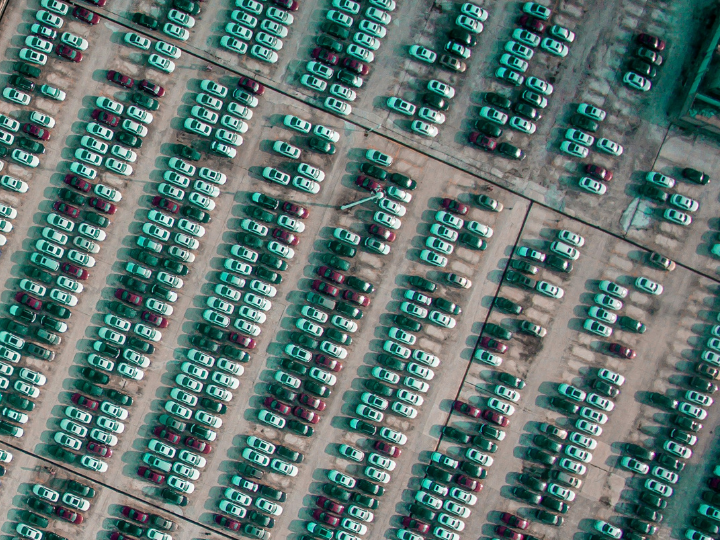More people are on the move around the world than ever before. An estimated 258 million people are currently living outside their country of origin
by
William Lacy Swing*
Every migrant chooses to leave home for different reasons, but they all bring their life experiences, knowledge, culture and ambitions with them. As they settle into life in their host countries, they acquire new skills and know-how. And they contribute to their families and communities in their country of origin by sending money home.
Financial remittances have been recognized as an important developmental vehicle associated with migration. Financial remittance flows have steadily increased in volume from the 1990s to the present day. In 2017, migrants sent an estimated $466 billion to families in developing countries. Money sent home from abroad is shown to be more stable than both private debt and portfolio equity flows, and several times larger than international development aid.

At the individual and community levels, remittance flows for migrant families can be economic lifelines. As we celebrate the International Day of Family Remittances on 16 June, we must reflect on the impact that these essentially private flows have on families. An estimated 800 million people worldwide are directly supported by remittances from relatives and loved ones abroad, according to the International Fund for Agricultural Development (IFAD). Remittances lift families out of poverty, improve health and nutrition conditions, increase education opportunities for children, improve housing and sanitation, promote entrepreneurship and reduce inequality.
However, apart from financial remittances, transnational communities also contribute by way of 'social remittances' - the flow of skills, knowledge, ideas and values that migrants transmit home. The impact of social remittances was most strongly felt in areas such as education, health, employment, business and aspects of governance, found a study conducted by IOM in Tanzania in 2014. There is also a broader development effect, as the recipients of social remittances extend beyond the migrants’ immediate circle of relatives and friends to the wider community beyond.
Control over earning is an important dynamism in women's empowerment. A woman returnee migrant worker from Saudi Arabia exchange money at the money changer booth at the ZIA International Airport, Dhaka, Bangladesh.
Economic lifelines
Taken together, financial and social remittances have an important role to play in the achievement of individual family goals, community and national development priorities, and the achievement of the SDGs more generally. However, to leverage the true development benefits of financial and social remittances, there is still work to be done.
First, governments can create an enabling environment to encourage remittance flows to productive sectors of the economy. Diaspora communities have habitually been important contributors to development in their countries of origin through financial flows, such as remittances, investment and trade, and the transfer of skills and social, cultural and technological capital. Governments can create stable environments which encourage diaspora members’ financial and social engagement with their countries of origin through incentives and policies such as tax breaks, financial products, financial literacy and access, savings products, entrepreneurship opportunities, and simplified entry and residence schemes.
Second, the historically high cost of social and financial remittance transfers needs to be reduced. Progress has been achieved in some corridors, where financial remittance costs have dropped down to below 3% - in Eastern Europe and Central Asia, for instance. However, in still too many parts of the world, high financial remittance transfer costs cut into the availability of funds at an individual level.
Transparency in the market
There are now more than 3,000 remittance services providers worldwide, according to IFAD, and a shift from the usage of banks to less costly Money Transfer Operators (MTOs) has thrown the sector into a state of flux. New platforms such as online transfer services, digital wallets and mobile money applications, combined with new technologies such as cryptocurrencies, have created greater competition and transparency within the remittance transfer market, though they do warrant a degree of caution from a security and fraud perspective.
However, social remittances are often challenged by restrictive migration regulations, which act as obstacles to mobility between migrants' host countries and their countries of origin. Multiple-entry visas, residence permits allowing an extended stay abroad without losing residence rights, and diaspora ID cards have proven to be effective in allowing travel back and forth between countries, facilitating social remittance transfer.
Third, awareness raising, financial literacy and access to affordable financial services are necessities for migrants in their new countries of residence and for their families back home. This will enable migrants to make informed choices about the cheapest and most secure means of sending money home, as well as provide them with an understanding of financial products in which their families can invest. This in turn will bolster the financial systems in countries of origin and residence.
Finally, regarding social remittances, there is a need to address the issue of an overwhelmingly negative narrative about migration. We need to look at migrants as agents of change in their home countries who can contribute directly to human development at a grassroots level. The need to engage diasporas effectively is becoming more and more expedient.
A long road ahead
In short, there is a lot work to be done. IOM and the UN Migration Agency, in partnership with specialized organizations, civil society, academia and the private sector, have engaged in several concrete projects and initiatives aimed at improving knowledge of social and financial remittance usage and corridors. They have conducted studies on the impact of remittances on families and communities, and worked to enhance the development impact of remittances, financial inclusion and diaspora engagement.
Some examples include collaboration with the Universal Postal Union and the RNP in Burundi to reduce remittance transfer costs, reach rural communities and enhance financial literacy, and a partnership with private sector participants to develop cost comparison tool MigApp. This helped to increase transparency around costs of international money transfer services along specific corridors.
Later this year, the international community will conclude negotiations on the Global Compact for Safe, Orderly, and Regular Migration (GCM), the first overarching international agreement of its kind. Financial and social remittances are an important component of the GCM discussions.
On the International Day of Family Remittances, let us pause to recognize the tremendous contribution of migrants, both in their financial and social remittances to economies, but most importantly to individual families. Let us continue working in partnership to ensure that migration plays its critical role as an enabler of all pillars of sustainable development, as recognized in the Agenda 2030.
*Director-General, International Organization for Migration (IOM)








